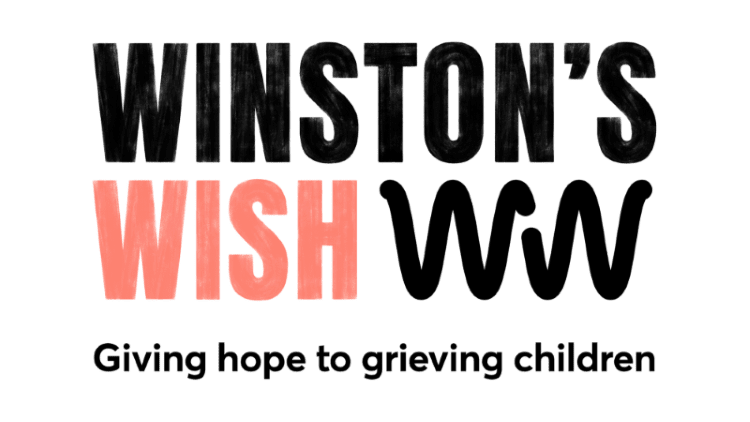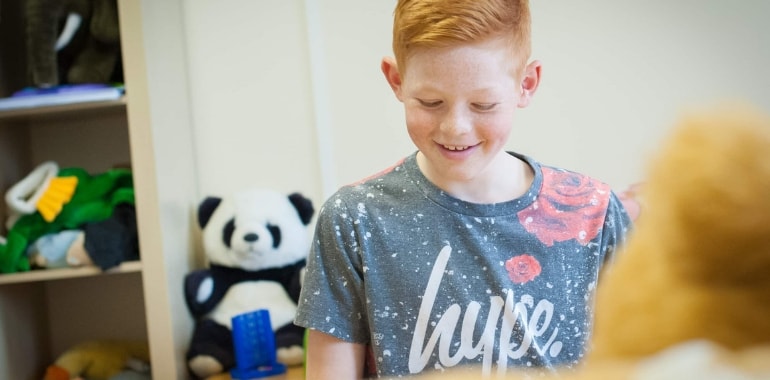Often, people will talk about the ‘different stages of grief’, suggesting that everyone’s grief follows the same path through the stages of grief and that their grief will get smaller over time. We know from our experience that it’s not that simple and we prefer to look at it another way, the idea of ‘growing around grief’.
Growing around grief
You’ll have heard people say something like ‘time heals’, suggesting that grief gets smaller. However, bereaved people’s experiences suggest that, actually, grief doesn’t go way, it doesn’t even grow smaller – we grow larger around it.
This way of looking at grieving was developed by Lois Tonkin.
To begin with, grief feels as if it takes up everything and there’s no room inside us for anything else. Earlier models of grief suggest that over time grief grows smaller.
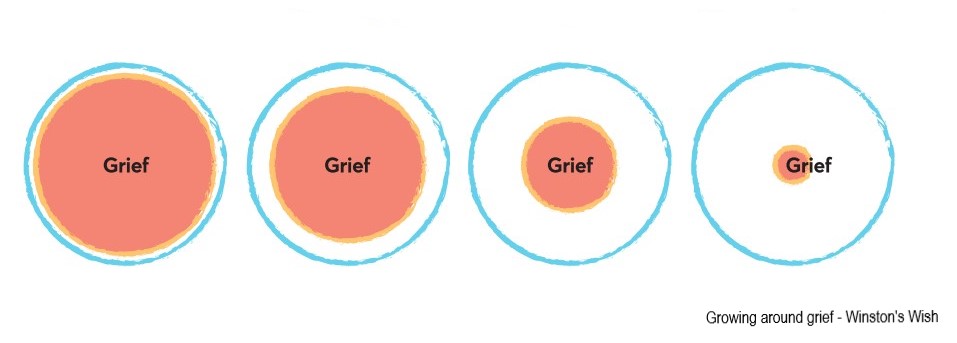
In fact, our grief stays the same size but in time we grow around the grief so we have space for other thoughts, experiences and emotions.
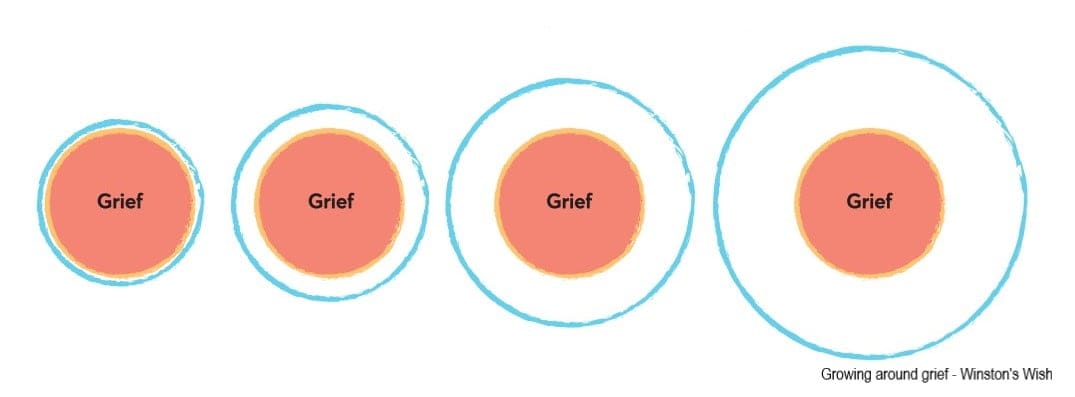
This isn’t a straightforward linear process. Some days, grief takes up all the space and some days you have room for other feelings and experiences. Over time, these may become more frequent. But the grief hasn’t shrunk – you’ve grown round the grief.
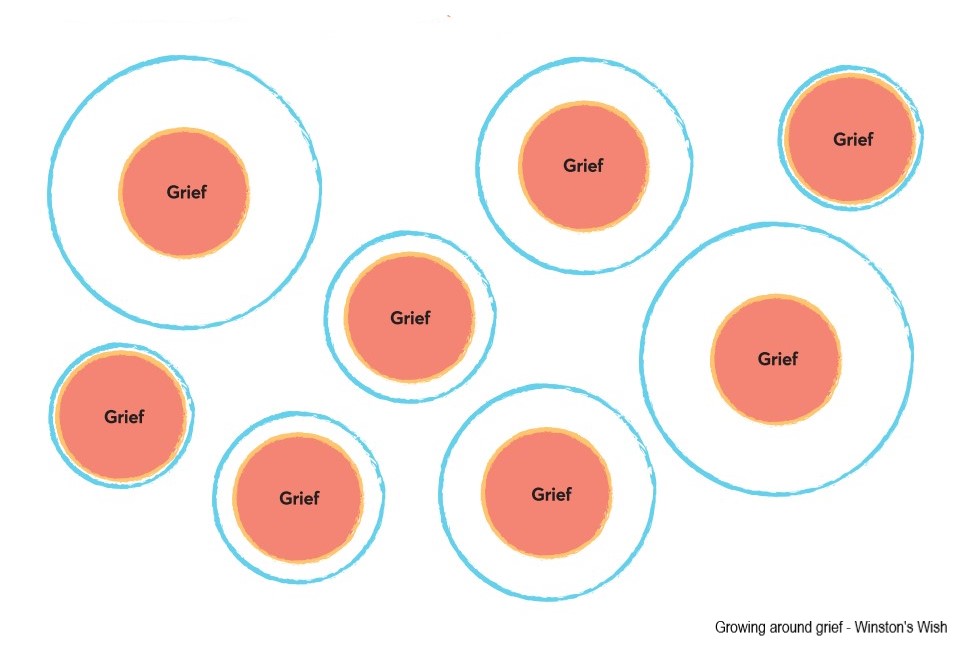
Puddle jumping
There is no linear journey of grief, bereaved children and young people can experience different thought and feelings at different times. In fact, children often jump in and out of their grief – we call this ‘puddle jumping’.
Children, particularly young children, may jump from feeling very upset and distressed one moment to wanting to know what’s for tea or whether they can play football, for example, the next. The reason for this is that children need a break from the powerful emotions that accompany their grief and so are able to jump out of them for a while in order that they are not overwhelmed.
This can be very confusing for children and they will need time and understanding to help them to process their loss.
Other resources you might find helpful
How to use a memory box
A guide to creating a memory box where children and young people can keep pictures and items that help them to maintain memories of the person who has died.
What do children understand about death?
How much children understand about death will be different at different ages and stages of development. We explain some of the most common stages.
